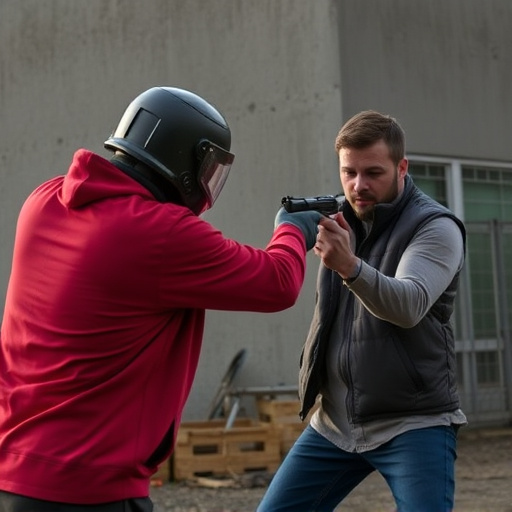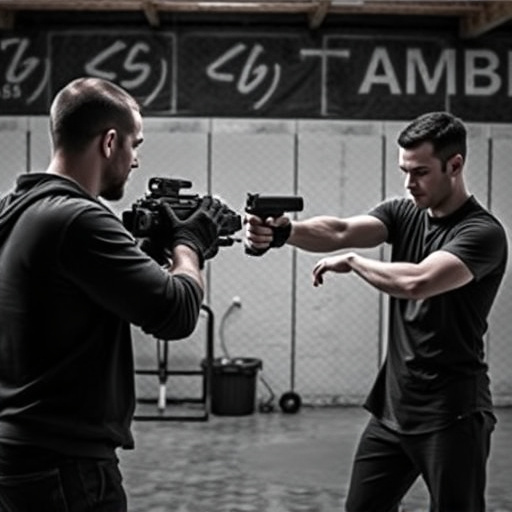Stun guns, though powerful non-lethal tools, have variable effectiveness based on user age, build, health, and gender, with younger/smaller individuals potentially experiencing stronger reactions. Close proximity, shielding, and aggressor resistance also impact performance. Proper training is vital for safety and effectiveness, as stun guns may not guarantee uniform results across diverse scenarios. Legal regulations vary by jurisdiction, underscoring the importance of understanding local laws for responsible use.
Personal defense weapons, particularly stun guns, have gained popularity for their non-lethal force capabilities. This article delves into the science behind electrical discharge weapons, focusing on their effectiveness across diverse demographics. We explore how factors like age and physical build influence stun gun performance, uncover gender differences in device response, and examine the psychological impacts alongside legal considerations surrounding their use. Understanding these nuances is crucial for informed decisions regarding personal safety.
- Understanding Electrical Discharge Weapons: A Brief Overview
- Stun Gun Effectiveness Factors: Age and Physical Build
- Gender Differences in Stun Gun Performance
- Psychological Impacts and Legal Considerations
Understanding Electrical Discharge Weapons: A Brief Overview
Electrical discharge weapons, commonly known as stun guns, are non-lethal self-defense tools designed to incapacitate an aggressor temporarily. These devices emit a powerful electric current that disrupts muscle control in the target, causing them to lose balance and become immobilized for several minutes. The stun gun’s effectiveness varies based on factors like the device’s voltage, the attacker’s physical build, clothing, and any defensive measures they might be using.
While stun guns are effective against many individuals, it’s crucial to understand their limitations. Some people, such as those with heart conditions or certain types of metal implants, may not be suitable candidates for stun gun use due to potential health risks. Additionally, factors like the aggressor’s distance, body shielding, and resistance can significantly impact the weapon’s performance. Thus, proper training and understanding the device’s capabilities are essential for effective and safe use.
Stun Gun Effectiveness Factors: Age and Physical Build
Stun guns, while effective for personal defense, don’t have a one-size-fits-all impact. Their effectiveness against an assailant depends on several factors, including age and physical build. Younger individuals with smaller frames might experience more intense disorientation from a stun gun shock due to higher muscle mass per unit weight. Conversely, older adults or those with larger builds may feel less affected, as their body mass can absorb the electrical discharge differently.
These variations highlight the importance of considering the individual’s physical characteristics when choosing and using a stun gun for self-defense. What works effectively on one person might not have the same impact on another, emphasizing the need for proper training and understanding of these tools to ensure their optimal use in different scenarios.
Gender Differences in Stun Gun Performance

When considering a stun gun as a personal defense weapon, it’s essential to recognize that its effectiveness can vary based on factors such as gender. Research suggests that men and women may have differing physiological responses to electrical discharge devices due to anatomical differences. Studies have shown that women often experience more intense immobilizing effects from stun guns compared to men. This could be attributed to the higher concentration of fat tissue in women, which absorbs a greater portion of the electric current, enhancing the stun’s impact.
Furthermore, the application technique also plays a role in the stun gun’s performance. Women might find it beneficial to focus on vulnerable areas like the groin and neck, where men typically require more force due to their larger body frames. Understanding these gender differences can optimize the use of stun guns, ensuring that individuals of all genders maximize their self-defense capabilities during unexpected encounters.
Psychological Impacts and Legal Considerations

The psychological impacts of using a stun gun cannot be overlooked, as it can create a sense of fear and disorientation in the target, often leading to compliance or escape. This tool’s effectiveness on different people varies; factors such as age, physical condition, and mental health can influence how an individual responds to the electrical discharge. For instance, a stun gun may have less impact on elderly individuals or those with certain medical conditions due to reduced muscle mass and altered neuromuscular control.
Legally, the use of personal defense weapons like stun guns is regulated, and understanding these regulations is crucial. Different jurisdictions have varying laws regarding who can possess, carry, and use them. Some areas require permits or registrations, while others have restrictions based on age or specific circumstances. The effectiveness of a stun gun for self-defense may also be affected by these legal considerations, as proper usage and knowledge of the law are essential to ensure both personal safety and compliance with local regulations.
Personal defense weapons like stun guns offer a non-lethal option for self-protection, but their effectiveness varies across different individuals. Factors such as age, physical build, gender, and psychological factors play a significant role in how well a stun gun can deter an attacker. Understanding these variations is essential for users to make informed decisions about their personal safety. When used responsibly and in accordance with legal guidelines, stun guns can be powerful tools for self-defense, providing peace of mind in potentially dangerous situations.
